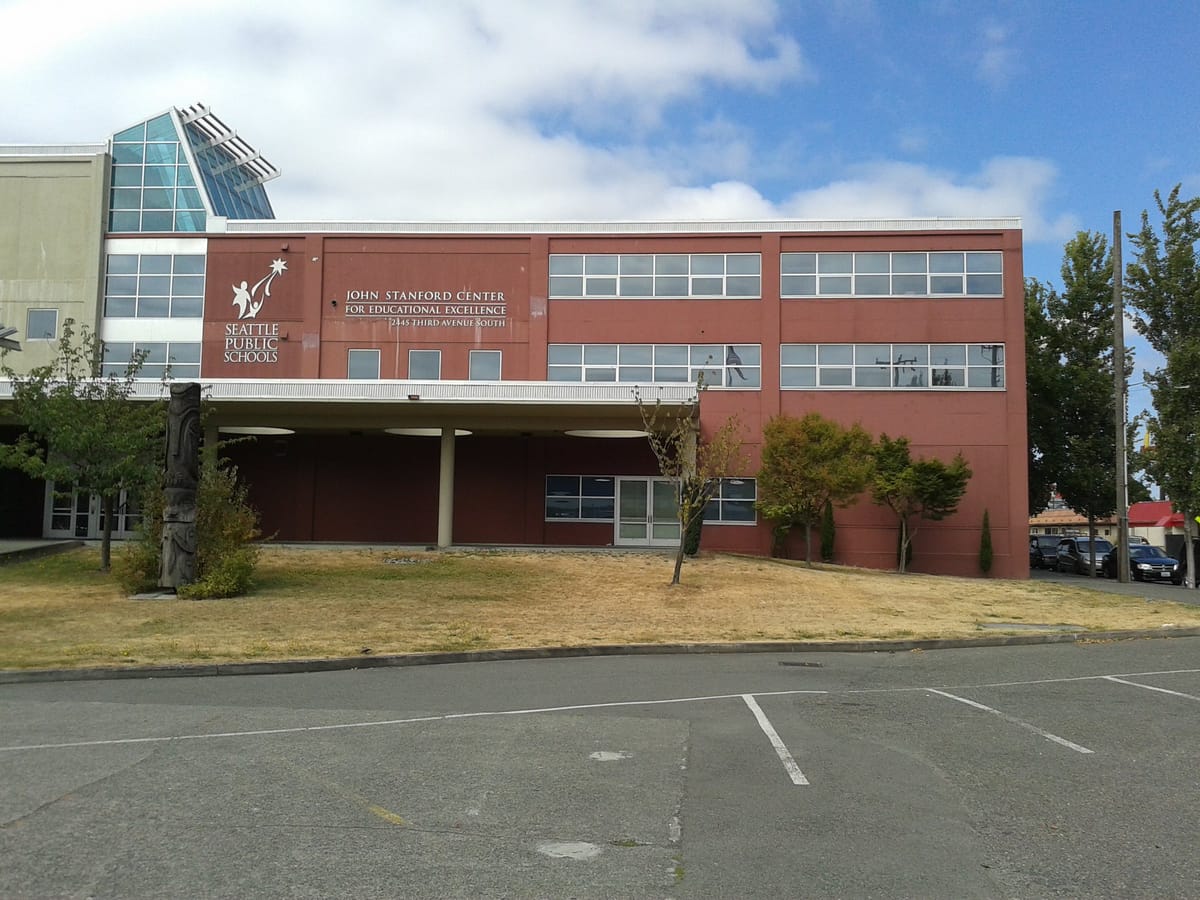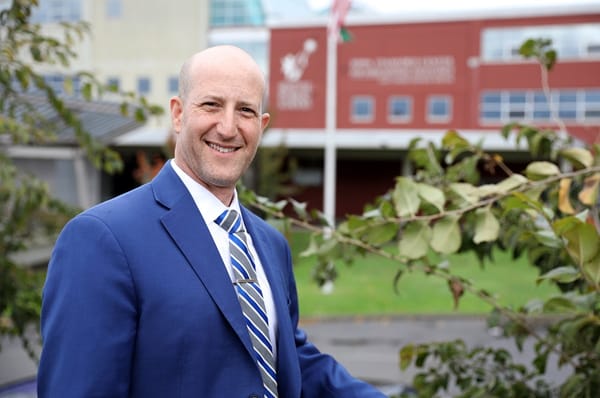Issue 3 -- Podesta & Buttleman Speak on Enrollment & Budget Planning

In this issue:
Seattle Public Schools leadership shared sneak peeks on Monday into the 2026-27 budgeting process and various enrollment changes coming to SPS next year.
On enrollment, district-wide population projections show little change, but new enrollment processes for school choice will mean greater flexibility for families and fewer staffing adjustments in the dreaded “October shuffle.”
On budgeting, the roughly $100M annual deficit remains a primary focus. Discussion centered on possible solution pathways including legislative advocacy for additional revenue, and budget cuts, with a community engagement survey to help the district prioritize.
Fred Podesta (interim superintendent; formerly COO) and Kurt Buttleman (assistant superintendent of finance) shared their plans at the November 17 general membership meeting of the Seattle Council PTSA (SCPTSA).
Enrollment
Podesta’s enrollment projections expect the overall student population to remain stable. SPS projects a net annual loss of 100-200 students per year (the district serves roughly 50,000 students). This year’s kindergarten cohort is slightly larger than last year’s, but it is not large enough to replace the graduating senior class of high schoolers.
Enrollment procedures for choice schools are changing in two ways for the 2026-2027 school year, in a move that SPS hopes will stabilize district planning and offer increased choice to families: Timelines are shifting earlier in the year, and SPS has changed its process for determining choice school capacity.
Revised School Choice Timeline
The first major change is in the timeline: Open enrollment applications are due by January 31 this year, a month earlier than the former end-of-February deadline. The district will notify applicants of their school placement on February 24. Those not placed will join a waitlist, which will be dissolved in May. In previous years, the waitlist dissolved in August.
The February 24 choice notification date will help families who are considering options outside of SPS. The earlier notifications mean that families are more likely to have SPS school assignments in hand when deciding whether to enroll in a private school. Many Seattle-area private schools have commitment deadlines that fall in the last days of February, or in March.
The dissolution of wait lists in May is intended to allow the district to staff schools appropriately during the summer months. Podesta expects this to significantly decrease the “October shuffle” of years past, yielding stability for schools and families.
School Choice Decisionmaking
SPS is also changing the way it computes capacity at choice schools. For 2026-27, the district will attempt to fill choice schools up to 85% of operational capacity. In previous years, the district has filled choice schools based on their estimated staffing at these sites. Podesta expects this change to increase the number of families able to enroll at choice schools.
Budget
The budget section of the presentation, led by Kurt Buttleman, focused on the state of the current budget and options for closing the deficit in the coming year.
State of the budget
The SPS operating budget for the current 2025-26 school year is $1.35 billion, 70% of which is allocated for teaching and “teaching support” activities. Because the district spends more than it brings in in revenue every year, it has relied on one-time solutions to balance the budget, including: drawing down the rainy day fund, taking an interfund loan (borrowing money from the capital fund to use for operations), cutting costs at the central office, and other measures.
Buttleman emphasized that while SPS has always been able to close the projected deficit, the structural deficit persists: SPS does not bring in as much money as it spends.
He also mentioned that there are some increases this year to state and local revenue that will benefit SPS. Buttleman did not elaborate in the meeting, but he appeared to be referencing a set of changes made by the Washington state legislature last year. Specifically, one new bill increased funding for special education and “materials, supplies, and operations costs” (often called MSOC). A separate piece of legislation lifted the lid on local EP&O levies, commonly called “operations levies.”
In a special budget development board meeting last spring, the district estimated that the special education and MSOC increases would bring annual increases of $6.4M and $2.7M, respectively, to SPS (“Big 3 Bills” slide). The same district report estimated that the levy lid lift would bring an additional $25M annually to SPS (“Other Bills of Note” slide). Indeed, the SPS adopted budget for the 2025-26 school year developed based on this report included an additional $54.9 million in state funding compared to the previous year (see budget p.17).
Looking ahead, Buttleman shared projections of the district’s annual deficits, ranging between $90M to $102M for each of the coming four years. He did not elaborate on the assumptions underlying the projections, including whether this includes partial repayment of the interfund loan or efforts to rebuild the rainy day fund. It was unclear from the presentation why the annual deficit would continue to hover around $100M even after the annual increase of $30M or more in combined revenue from state and local funding.
2026-27 budget development
Development of the 2026-2027 budget is already underway. Buttleman will put a budget proposal in front of the board in January, followed by a public engagement period extending through March. In May, district staff will present their recommended budget to the school board, who typically votes to adopt it in a meeting in July.
Buttleman noted that his goal is to develop a set of choices, rather than a single plan. The district’s new superintendent is scheduled to begin work in January, and by that time the three newly elected board directors will also have taken up their positions.
He additionally outlined a list of areas where flexibility might be found in the budget, to address the deficit:

In the past, proposals related to transportation changes have meant a change to three bell times across the district instead of two, allowing for more efficient use of yellow buses, though this point was not elaborated specifically in this meeting.
During Q&A, Buttleman clarified that the bullet point titled, “Portfolio of schools,” means re-evaluation of both the number of schools SPS operates, and the overall profile of programming available to students.
Of SPS’s 12 major labor partners, all but 2 or 3 have contracts that are up for renegotiation next year, creating a large source of fiscal uncertainty that Buttleman discussed during Q&A. This includes the Seattle Education Association, the teacher’s union. The SEA contract was up for renewal last year but both parties agreed to extend it by one year. A renegotiated contract is thus due for signing in autumn of 2026.
Community Budget Input
The SPS presentation closed with the introduction of a prototype community survey. The survey language was taken from a survey done by the nearby Shoreline district, and the SPS representatives emphasized that they are workshopping it before engaging with the broader SPS community.
The survey lists ten aspects of a quality education, and asks respondents to rank them in order of importance. The dates for community engagement were not specified.

What’s Next?
Next for enrollment
The district is holding a series of public outreach sessions to spread the word about new choice enrollment dates. The schedule of events can be found here. These events include virtual and in-person sessions describing the enrollment process, as well as an annual Enrollment Fair in January where families can learn more about the different programs available across the district. Additional details about the enrollment process itself can be found here.
Here at the Bulletin, we are looking forward to watching how the process and timeline changes are reflected in on-the-ground enrollment numbers at choice schools in the fall.
Next for the budget
District staff will bring a budget proposal to the board in January, followed by a two month public engagement period. Per the SPS presentation, the public will be able to weigh in on SPS’s budget choices via the promised community survey. As always, anyone can sign up to give public testimony on any topic, including the budget, at a school board meeting.
In terms of possible additional revenue to the district, the school board unanimously passed its legislative agenda at Wednesday evening’s meeting. This year’s priorities include protecting last year’s K-12 funding increases, alongside a number of requests that would have smaller, though positive, impacts on the budget. A copy of the just-passed legislative agenda can be found here. (We'll have more to say about this agenda in the coming days – eds.)
Julie Letchner is an advocate for stronger public schools in Seattle, working at the state, district, and local school levels. As a parent of three SPS students and a former data scientist, she brings her lived experience and a critical, analytical mindset to her work. Julie has a PhD in computer science and left her tech career in 2020 to focus on family, advocacy, baking elaborate treats, and making terrible puns.



